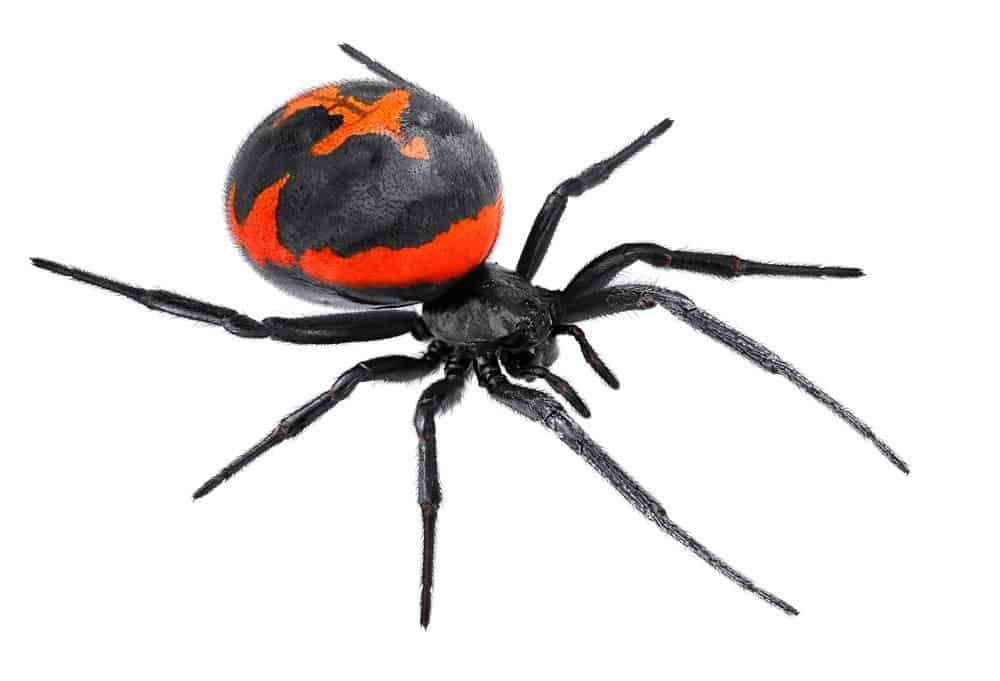
Black widows live all across the U.S. in urban areas but prefer grasslands, woodlands, and deserts.
©Protasov AN/Shutterstock.com
Black widow spiders, or Latrodectus, are a group of arachnid spiders. Australia, Africa, and South America all have Latrodectus spiders. Black widows live in urban areas, woodlands, deserts, and grasslands in the United States. They are most notable for their striking appearance and alleged propensity to eat their own kind. Have you ever wondered if this is true? How dangerous is the black widow and are their bites venomous? Are black widows deadly? Find out here!
Are Black Widows Dangerous?
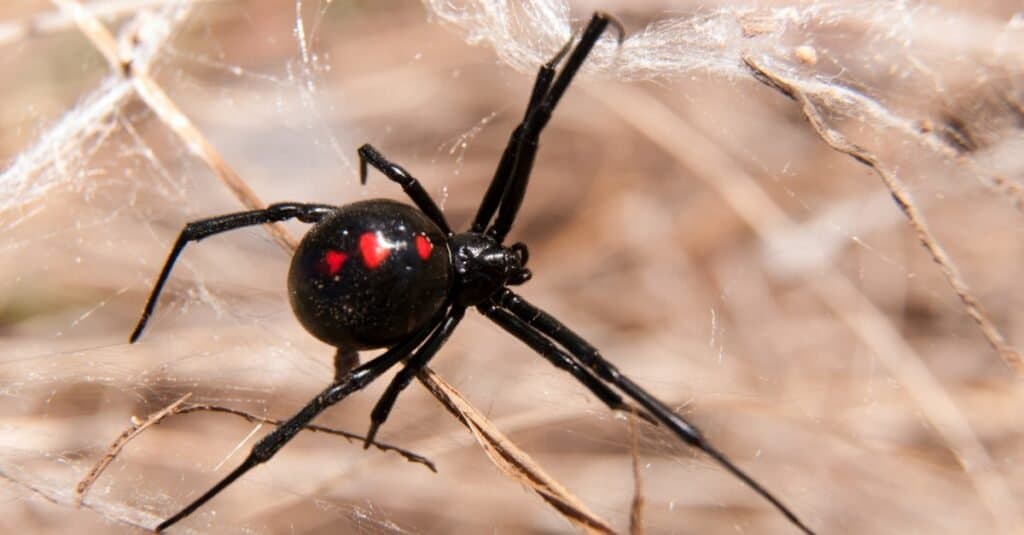
The black widow spider is not dangerous unless provoked.
©Sari ONeal/Shutterstock.com
The black widow spider is a shy and non-aggressive species of spider, not considered dangerous unless provoked. They will not go out of their way to attack you. However, if they feel threatened, black widow spiders will bite.
Spiders such as black widows prefer to hide out in dark places, such as stacks of rocks or leaves. To avoid getting bitten by a black widow spider, don’t move or disturb these mounds without gloves. You should also wear gloves when moving things out of dark basements and garages. These places may be home to black widow spiders.
Are Black Widows Poisonous?
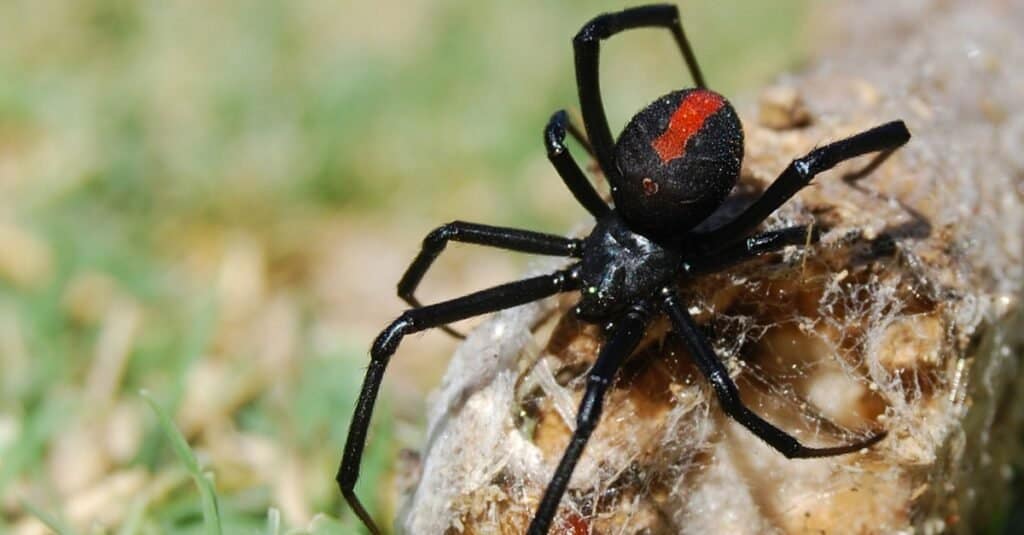
Although black widows do have venom, a bite from one is very rarely fatal.
©iStock.com/maria72
Although black widow poison is 15 times stronger than rattlesnake venom, its bite rarely kills humans. Because spiders have less venom than snakes, their bites are only dangerous to the incredibly young and the old.
Black widows use their venom to subdue and consume prey. Toxin alpha-larotoxin, found in widow venom, induces unfavorable effects in its victims. Although the black widow’s bite is small, this venom overwhelms nerve cells, producing swelling and extreme agony.
Only adult females can bite people. Males and juveniles either don’t bite humans or their mouthparts are too small or weak to do so.
Toxic symptoms of this genus include nausea, excessive perspiration, severe abdominal and back pains, muscle aches, hypertension, and diaphragmatic paralysis (difficulty breathing). The Occupational Safety and Health Administration states that pain might last eight to 12 hours, and other symptoms can last days.
What Do Black Widows Look Like?
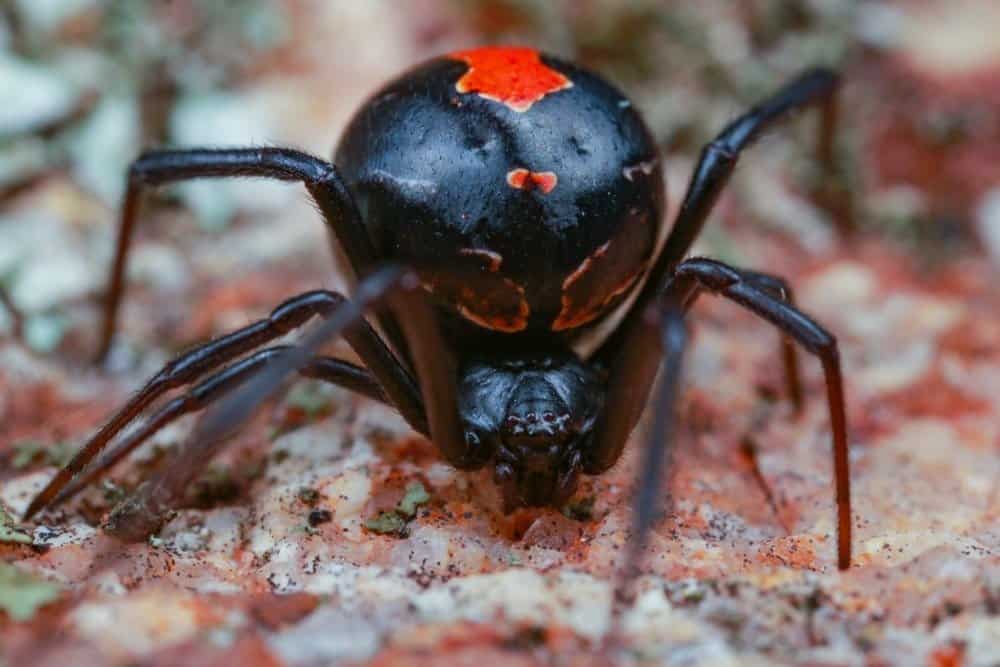
Female widows are black with red markings in their abdomen, whereas males are lighter with more pink.
©Peter Yeeles/Shutterstock.com
Male and female black widow spiders look quite different, as is the case with many other spider species.
The females of all black widow species have shiny black bodies and a red hourglass-shaped pattern on the underside of their round abdomen. The hourglass markings on females can also be orange yellow. The female black widow is around 1.5 inches long.
Compared to darker-colored females, males have smaller abdomens with lighter red or pink-colored patterns. Male black widows are less than half the size of females, with a body length of up to 0.5 inches.
How Serious Is a Black Widow Bite?
A black widow’s bite is venomous, yet many people have no or minor health issues. The AAPC received roughly 1,866 black widow bite reports in 2013. Only 14 had severe symptoms, nonfatal.
The black widow spider’s venom is neurotoxic. Some people are mildly affected, while others are severely afflicted. You may experience significant pain, burning, swelling, and redness.
What To Do If You Think You’ve Been Bitten by a Black Widow Spider:
Anyone who has been bitten by a black widow spider, or who fears they have been bitten, should seek emergency medical attention.
Before you go to the hospital, or even while you’re on your way there, there are some things you can do to prepare:
- Use soap and water to properly clean the bite.
- Take 10-minute pauses between applying a wet or moist ice pack to the affected area.
- If at all feasible, elevate the site of the bite.
You should get to a hospital as soon as possible but try not to panic. Antivenom for black widow bites is available; it works on all black widow species and relieves pain within 30 minutes.
Do Female Black Widows Eat Their Mates?

©Jay Ondreicka/Shutterstock.com
If you want to know whether the black widow female eats her mate, the answer is sort of. Females rarely engage in sexual cannibalism. The Southern Hemisphere is home to the only Latrodectus species where mate cannibalism is the norm rather than the exception. However, once they emerge from their eggs, black widow babies often consume their freshly hatched siblings.
What Do Black Widows Eat?
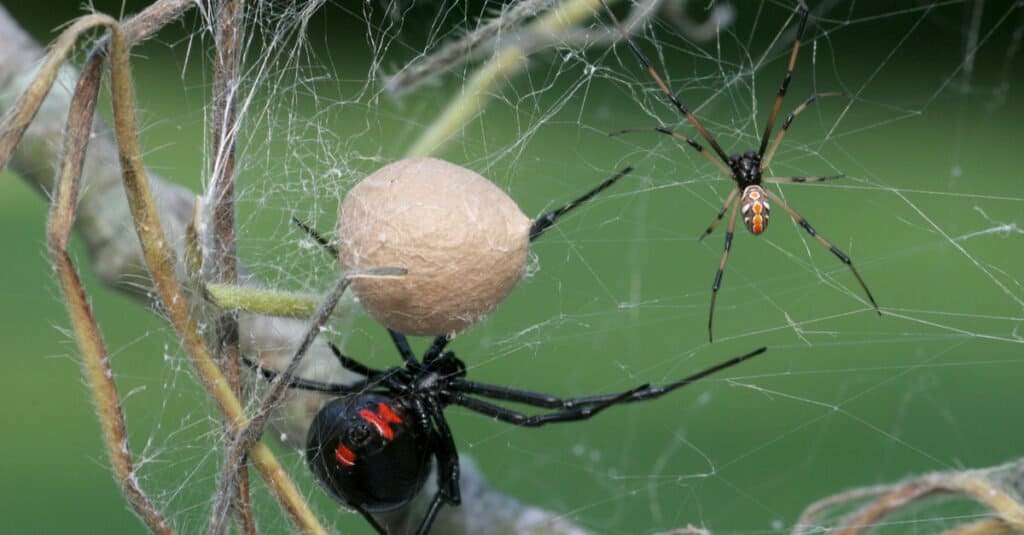
Black widows primarily eat other smaller insects.
©Mark_Kostich/Shutterstock.com
Insects and arachnids are the primary diets of black widows, although they have been observed to catch and eat small vertebrates like snakes and lizards as well.
How Do Black Widows Trap Their Prey?

The black widow uses its venom to paralyze its prey.
©Jay Ondreicka/Shutterstock.com
The black widow spider paralyzes its prey with a poisonous bite once the animal is caught in its web. The spider releases enzymes into the prey’s body, then carries it away to be devoured.
The photo featured at the top of this post is © iStock.com/maria72
Thank you for reading! Have some feedback for us? Contact the AZ Animals editorial team.






